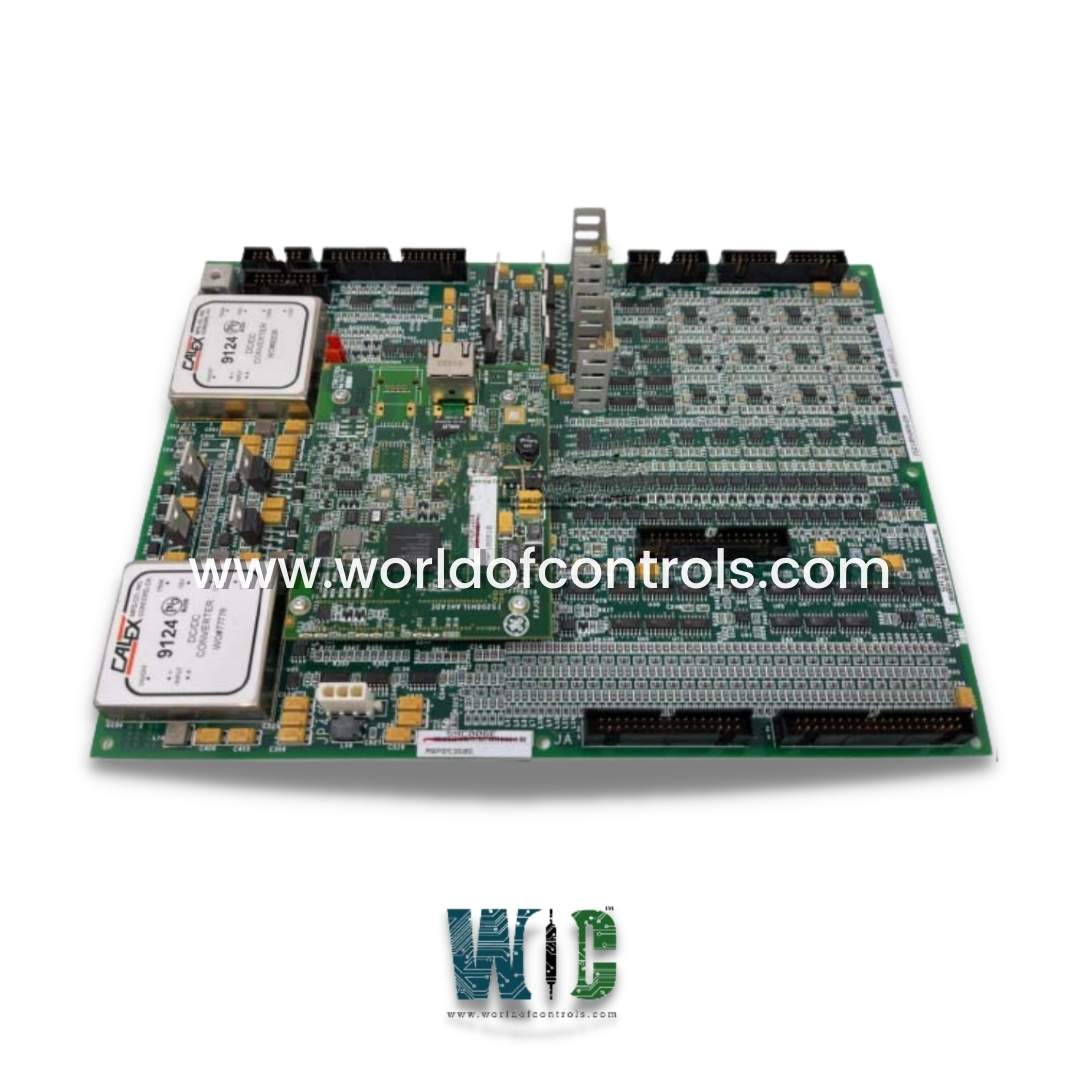SPECIFICATIONS
Part Number: IS210MVRAH1A
Manufacturer: General Electric
Series: Mark VIe
Function: Interface Board
Repair: 3-7 Day
Operating Temperature: 32 to 113ºF
Power Source: 120 or 240 VAC
Product Type: PCB
Availability: In Stock
Country of Manufacturer: United States (USA)
Manual: GEH-6721
Functional Description
IS210MVRAH1A is a Interface Board manufactured and designed by General Electric. It is a part of the Mark VIe Series Control Systems. The Mark VIe controller is available as a UCSx stand-alone module that fits directly inside a cabinet or as a UCCx CompactPCI (CPCI) 6U high single board computer that fits inside a rack. The Mark VIe controller is pre-loaded with application-specific software, such as steam, gas, land-marine (LM), or BOP products. It is capable of running Relay Ladder Diagrams (RLD) or blocks. The IEEE® 1588 protocol is used to synchronize the clocks of the I/O modules and controllers to within 100 microseconds via the R, S, and T IONet. External data is transferred to and from the controller's control system database via the R, S, and T IONet.
System UDH Communicator
- Controller communication occurs across the UDH. A UDH communicator is a controller that has been chosen to provide panel data to that network. Control signals (EGD) as well as alarms are included in this data. Each controller is physically connected to the UDH in its own way.
- If a UDH network fault causes the controller to become isolated from its companion controllers, the controller takes on the role of UDH communicator for that network fragment. There can only be one designated controller per panel, but there can be multiple UDH communicators. A UDH communicator is always designated as the controller.
- When a controller does not receive external EGD data from its UDH connection, it may request that the data be sent across the IONet by another UDH communicator. The data is supplied by one or more communicators, and the requesting controller uses the most recent data set received. Only external EGD data used in controller sequencing is forwarded in this manner.
System Modbus
- Serial and Ethernet Communication: Modbus can communicate with the Human-Machine Interface (HMI) through either serial connections, such as RS-232 or RS-485, or Ethernet connections, like TCP/IP. Serial communication is often utilized for connecting devices over short distances, while Ethernet is preferred for larger networks or remote connectivity due to its higher data transfer rates and longer range capabilities.
- Information Gathering and Protocol Translation: In Modbus communication, information is gathered from the connected control systems and devices. This data may include sensor readings, process variables, status information, and control commands. Before transmission, this information is translated into the standard Modbus protocol format, which ensures uniformity and compatibility across different systems.
- Slave Mode and Master Mode: Modbus supports two primary modes of communication: Slave mode and Master mode. In Slave mode, the control system acts as a passive responder, waiting for requests from other devices or systems. When a request is received, the Slave system responds with the relevant data or performs the required actions as per the received command. The Slave mode is most commonly used when the control system needs to communicate with other distributed control systems or supervisory systems.
- Master Mode: On the other hand, in Master mode, the control system takes the active role of initiating communication with other devices or systems. The Master system sends requests to the Slaves to obtain data or command them to execute specific operations. Master mode is typically employed when centralized control and monitoring are required, and the control system needs to gather information from multiple distributed devices.
- Advantages of Slave Mode for Communication: The Slave mode of communication in Modbus is widely used due to its inherent advantages. It allows various distributed control systems and field devices to be seamlessly integrated into a larger control network. By acting as Slaves, these systems can easily respond to requests and provide relevant data, making it efficient and straightforward to incorporate them into the overall industrial automation architecture.
WOC has the largest stock of GE Distributed Gas Turbine Control System Replacement Parts. WOC is happy to assist you with any of your automation requirements. For pricing and availability on any parts and repairs contact us.
FREQUENTLY ASKED QUESTIONS
What is IS210MVRAH1A?
It is a Interface Board manufactured and designed by General Electric
What is the difference between UCSx and UCCx?
UCSx is a stand-alone module that fits directly inside a cabinet, while UCCx is a CompactPCI (CPCI) 6U high single board computer that fits inside a rack.
What is the pre-loaded software available for Mark VIe controller?
The Mark VIe controller is pre-loaded with application-specific software such as steam, gas, land-marine (LM), or BOP products.
What programming languages are supported by the Mark VIe controller?
The Mark VIe controller is capable of running Relay Ladder Diagrams (RLD) or blocks.
